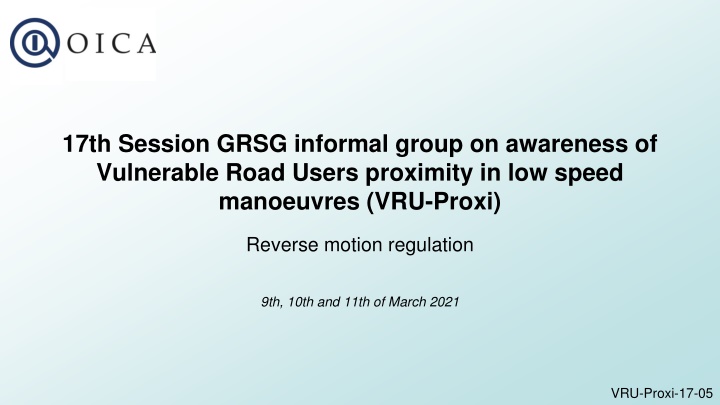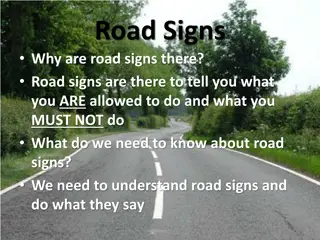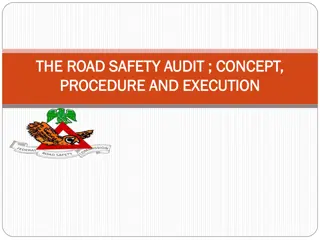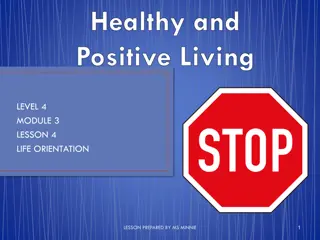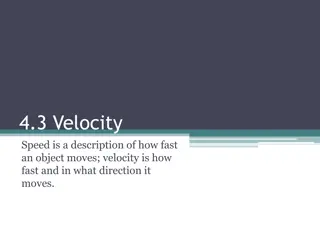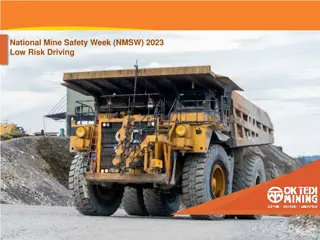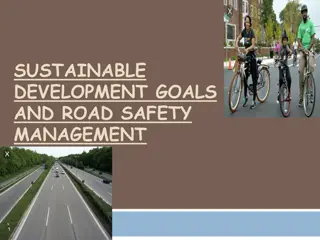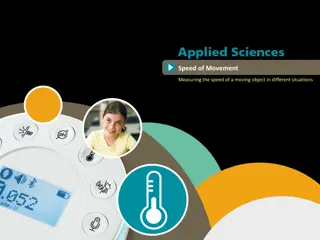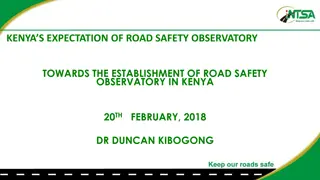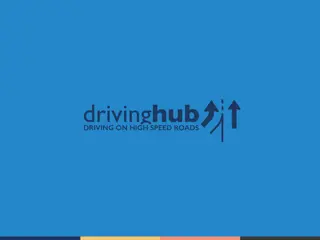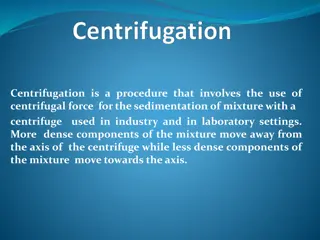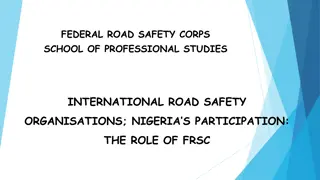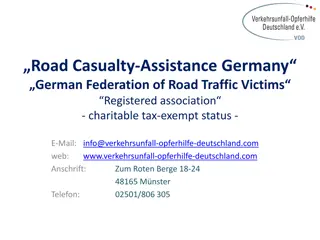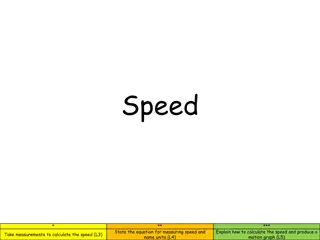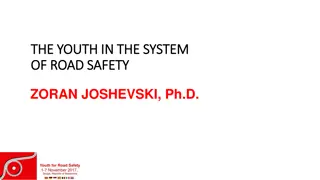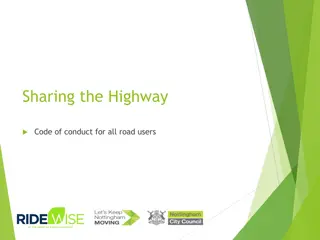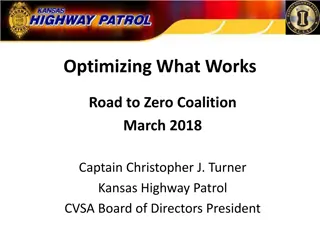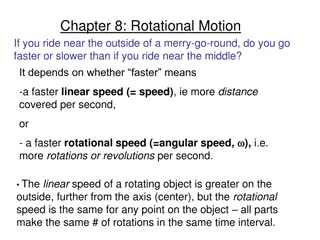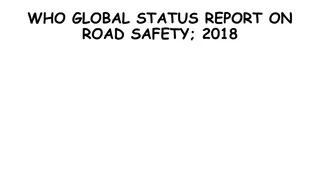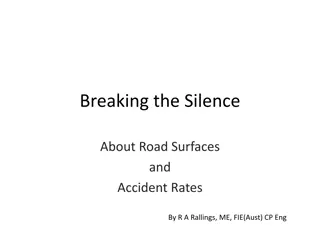Enhancing Safety Measures for Vulnerable Road Users in Low-Speed Manoeuvres
This session focuses on awareness of Vulnerable Road Users (VRU) in low-speed manoeuvres with a specific emphasis on reverse motion regulation. It includes discussions on object size measurement, remote control functions, and incorporating text for future system regulations. The aim is to improve safety standards and address concerns related to VRUs in proximity to vehicles during various manoeuvres. Relevant proposals and clarifications are presented for discussion and consideration.
Download Presentation

Please find below an Image/Link to download the presentation.
The content on the website is provided AS IS for your information and personal use only. It may not be sold, licensed, or shared on other websites without obtaining consent from the author.If you encounter any issues during the download, it is possible that the publisher has removed the file from their server.
You are allowed to download the files provided on this website for personal or commercial use, subject to the condition that they are used lawfully. All files are the property of their respective owners.
The content on the website is provided AS IS for your information and personal use only. It may not be sold, licensed, or shared on other websites without obtaining consent from the author.
E N D
Presentation Transcript
17th Session GRSG informal group on awareness of Vulnerable Road Users proximity in low speed manoeuvres (VRU-Proxi) Reverse motion regulation 9th, 10th and 11th of March 2021 VRU-Proxi-17-05
Clarification on object size measurement (RVC) Proposal on annex 9 - 3.2: 3.2. Extract photographic data. (a) Using the photograph, measure the apparent length, of a 50 mm delineated section of the in-photo ruler, edge, closest to the rear-view image and at a point near the horizontal centre of the rear-view image. (b) Using the photograph, measure the horizontal width of the coloured band at the upper portion of each of the three test located at positions G, H, and I in Figure B (c) Define the measured horizontal widths of the coloured bands of the three test objects as dG, dH, and dI. Justifications: - Annex 9 - 3 defines the methodology to measure the object size shown in the monitor (the requirement is in 16.1.1, see below): 16.1.1. Object size When the Rear-view image is measured in accordance with the paragraphs 3. of Annex 9, the calculated visual angle subtended by the horizontal width of: (a) All three test objects at the last row specified in 15.2 shall average not less than 5 minutes of arc; and (b) Each individual test object shall not be less than 3 minutes of arc. - Annex 9 - 3.2 is a copy paste of FMVSS111 and this coloured band is defined in FMVSS111 and used to measure the object size (See below illustration). The coloured band is not defined in UN-R158 and may be confused with the movable painted patch FMVSS 111 object coloured band used to measure the object size along the ruler s objects UN-R158 painted patch used to checke the visibility of the poles in the first row
Remote Control Functions Addition of following text to incorporate remote control functions: x.x The requirements in paragraph [ ] shall not apply during a remote control manoeuvring and remote control parking ( Eg: ACSF Category A, RCP as defined in UN Regulation No. 79.) Justification: During remote functions according to UN Regulation No. 79 the vehicle driver has no access to his human machine interface.] Alignment with the text of Text of UN Regulation No. 79: 2.3.4.4. "Remote Control Manoeuvring (RCM)" means a function actuated by the driver that provides direct control on steering angle, acceleration, and deceleration for low speed manoeuvring. The actuation is made by remote control in close proximity to the vehicle. 2.4.8. "Remote Controlled Parking (RCP)" means an ACSF of category A, actuated by the driver, providing parking or low speed manoeuvring. The actuation is made by remote control in close proximity to the vehicle.
Additional point for consideration/discussion Additional point to be considered is the additional red text formulation in general to cover future systems in this regulation (R158) and accordingly there would be no need for additional changes or supplements. Suggested Text: x.x The requirements in paragraph [ ] shall not apply during a remote control manoeuvring and remote control parking ( Eg: ACSF Category A, RCP as defined in UN Regulation No. 79.) or while the automated driving functions are in control of the vehicle (driver not in control of the vehicle)*. *Red text formulation is up for discussions Reference to Supplement No.3 in UN-R152 (Presented GRVA Sept. 2020 Session) Link to the UNECE: https://unece.org/fileadmin/DAM/trans/doc/2020/wp29grva/ECE-TRANS-WP29-GRVA-2020-26e.pdf Since it is expected to be included in UN R152 supplement, it would be useful to apply the same to R158 to maintain uniformity.
Monitor on the meter cluster Regulation statement: 16.1.3.1. The monitor defined size shall be visible without any obstruction from the ocular reference point. A virtual testing is acceptable Test procedure: (a) Put the vehicle into the active vehicle mode. This action shall initiate/start the first timer. (b) Wait for a minimum of 6 sec (c) Start the backing event by selecting the reverse mode. If it is not possible to put the vehicle into reversing mode 6 sec after being put into active vehicle mode, the backing event shall be started as soon as technically possible. (d) Initiate/start the second timer, in accordance with the manufacturer s specification and no later than when the reverse mode or gear is engaged. (e) Record the response time on second timer until the rear-view is completely visible on the display. Video Display No reference to steering wheel position in the test procedure. Not unique Technical Service feedback: First technical service negative feedback for display in the cluster Second technical service positive feedback because the verification is performed at normal driving position. Anyway, the Technical Service suggests a clarification in the regulation text. No indication on the requirement violation
Optical Information Signal on the meter cluster Regulation statement: 17.3.4. Optical information In the case optical information is placed on a monitor used for other information such as meter cluster display or other displays, overlay is allowed and shall comply with the overlay requirements of the RVCS in 16.1.1.2. of this Regulation. As long as one information signal remains active, the driver may de-activate the other information signals. 17.2.2.1 Test procedure: (a) Place a test object in the required field of detection (b) Put the vehicle into the active vehicle mode. This action shall initiate/start the first timer. (c) Wait for a minimum of 6 sec (d) Start the backing event by selecting the reverse mode. If it is not possible to put the vehicle into reversing mode 6 sec after being put into active vehicle mode, the backing event shall be started as soon as technically possible. Initiate/start the second timer, in accordance with the manufacturer s specification and no later than when the reverse mode or gear is engaged. (e) Record the response time on second timer until information signal is available." Information signal No reference to steering wheel position in the test procedure. Not uniform Technical service feedback: First technical service negative feedback for optical signal in the instrument cluster Second technical service positive feedback for optical signal in the instrument cluster as long as audible signal is not de-activated. No indication on the requirement violation
Monitor and Optical Information Signal on the meter cluster Conclusions Not uniform Technical Service feedback Not clear indication on which requirement or procedure is violated For Detection system: The cluster is showing most of safety-related telltales and other information signals For both systems The tests are at static conditions. In the test conditions is not defined a specific steering wheel position.
